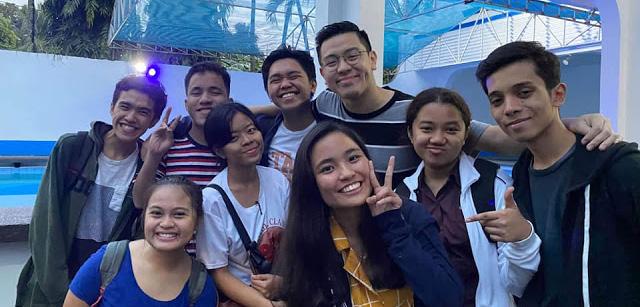
4 minute read
Pandemics
from GENEWS October 2020 Issue
by Genews
Genomics Against Pandemics: Combating COVID-19 through PH Genomics and Bioinformatics
by DANIEL VARIAS (Isochore)
Advertisement
Solving the COVID-19 pandemic afflicting the Philippines could be within the genes. Through a researchbased approach employing the science of genetics, genomics, and bioinformatics, the country should gain the upper hand in the current battle against SARSCoV-2, the causative agent of COVID-19. Thus, the country must heed the need for such approach. The National Academy of Science and Technology (NAST) advocated for approaches grounded on science and technology to the administration. A part of NAST’s suggestion involved conducting local researches in genetics. Specifically, the institution asserted that the country should contribute to globally accessible databases on the molecular structure of SARS-CoV-2 isolated from Filipino patients. In response to this, the Core Facility for Bioinformatics of the Philippine Genome Center (PGC) already contributed six viral genome sequences from local samples obtained within March 22-28 to GISAID database (gisaid. org). Through this initiative, the sequences submitted to the database will be crucial for vaccine development, as it serves as a reference for international institutions racing to discover a vaccine. Scientists, both locally and internationally, delve on the sequence variations to find regions with little to no mutations where the vaccine could target. To continuously contribute to the scheme and to ensure that the virus isolated in the country is susceptible to the vaccine, isolated viral samples which are isolated more recently should be
sequenced. Also, as the new study on SARSCoV-2 mutation rate suggests, the base substitution of thymine to cytosine or guanine, cytosine to guanine, and guanine to thymine gains an increment of 0.1% in mutation rate. This relatively low yet continuous rate of the virus is good news for vaccine development, hence latest samples of the virus from Filipino patients must be sequenced to make the most of this news.
However, despite this discovery, complacency has no place in dealing with the virus. The latest study from Florida’s Scripps Research Institute suggested that SARS-CoV-2 mutated into a more infectious variant through a D614G mutation in the spike protein, and a study from Los Alamos National Laboratory in New Mexico detected the mutation that enabled the virus to be more infectious in the United States and European countries. In the local setting, we should further investigate into the variant the Philippines has to know its current status, i.e. whether our variant mutated into a more severe one or not. To effectively do so, the Philippine government must include the support for the country’s initiative in bioinformatics in its priorities, aiding in increasing the facilities’ capacity through added equipment and resources, in just compensation towards our laboratory personnel, among others.
Furthermore, NAST also urged the country’s scientists to study genetic markers in the Filipino genome that imply effects on the infection and SARS-CoV2’s virulence towards Filipinos. Results from biomarker research shall provide information on the people’s susceptibility to the virus and may provide therapeutic approaches specialized towards the Filipino population inflicted with COVID-19.
For example, researchers in Italy suggest that variations in the genes encoding for Human Leukocyte Antigen (HLA) may explain how the virulence of SARS-CoV-2 differs from northern Italy to southern Italy, where the latter experienced less severe symptoms than the former. Again, there is a need for similar information about the Filipino genome to aid in our battle against COVID-19, thus we incessantly implore the government’s concrete support in conducting local genomic studies.
Scientific and medical problems require solutions of the same nature. Thus, utmost priority must be imposed on the scientific and research-based recommendations raised by the country’s institutions. After all, the key to defeating the pandemic that is devastating the country at present may be in the genes waiting to be seen.
Register at https://forms.gle/HEQ25mXxzBTFZ3S18 to join our Discord server!


For inquiries, you may drop a message to Rani Fabros (09177378674). To pre-order, click this link and fill out the form: https://forms.gle/ZXiiq8FVeDKhJzuv6
Call for Participants for Genetics Camp 2021
The UPLB Genetics Society will hold its 14th Genetics Camp on March 12-14, 2020. The Genetics Camp Committee will bring the event online with the help of online conferencing platforms such as Zoom and Facebook Live to cater more participants and reach a wider audience. The committee continuously aims to promote the science of Genetics to the Filipino youth, as well as how this field is involved in the current challenges of the country.

The Genetics Camp is a flagship event by the organization that caters to the Filipino high school students and educators. The activity consists of different events that stimulate analytical skills in the field of science and especially, Genetics. For this year, the theme of the activity is “BioenGENEers: Examining the Role of Recombinant DNA Technology Amidst Recent Challenges in Public Health”. The theme pursues to show the Filipino youth that the science of Genetics has the capability to solve challenges in the society, especially in public health. The ultimate goal of Genetics Camp is to show the Filipino youth the beauty of Genetics, and how Genetics can be used to further the development of the society.
The Genetics Camp Committee and The UPLB Genetics Society is welcoming and inviting partnerships and sponsorships from individuals or groups of people who have the same goals and aspirations for the Filipino youth. Contact the Genetics Camp Committee at gencamp.genesoc@gmail for more details.
Help The UPLB Genetics Society and Genetics Camp Committee continually promote well-roundedness and excellence to the Filipino youth. Become a Genetics Camp sponsor now!












